Structure Of Animal Cell Biography
Source:- Google.com.pk
Biology & Biotechnology
BB 125X. HUMAN BIOLOGY
BB 205X. ANIMAL BEHAVIOR
BB 290X. MICROBES TO MOLECULES: CROWD SOURCING NOVEL ANTIBIOTIC DISCOVERY
Using an authentic research project, students will gain skill in the process of scientific inquiry, including hypothesis generation and testing, and in common procedures of microbial culture and characterization. Students enrolled in the course will be part of a national student crowd sourcing initiative to identify novel antibiotics produced by soil bacteria in response to a decreasing supply of effective antibiotics and increased microbial resistance. Students will report their findings in a poster style format and will be able to see the results of other groups around the country as the course continues. Students may not receive credit for both BB 2901 and BB 290X. Recommended background: A familiarity with current topics in biotechnology or microbiology such as those introduced in BB 1035 and BB 2002, or equivalent.
BB 301X. SIMULATION IN BIOLOGY
In this course, students will use the graphical programming language StarLogo The Next Generation (SLTNG) to develop their own agent-based simulations of biological processes. Agents may be chosen to represent molecules, cells, or organisms. Examples might include such phenomena as population genetics, predator-prey dynamics, cell-cell communication, or enzyme-substrate interactions. Recommended background: completion of at least one 3000 or 4000 level biology or biochemistry course. No prior programming experience is required.
BB 1001. INTRODUCTION TO BIOLOGY
Cat. I This course consists of an overview of the major concepts of Biology, including: cell theory, bioenergetics, molecular biology, reproduction, nutrition, growth, development, homeostatic controls, and ecological issues. This course is intended for students seeking a broad overview of contemporary Biology with emphasis on human issues and current topics. Intended for non-majors. Recommended background: high school or introductory college level chemistry.
BB 1002. ENVIRONMENTAL BIOLOGY
Cat. I This course provides an introduction to natural ecosystems, population growth, and the interaction between human populations and our environment. Major areas of discussion include Ecosystems, Populations, Biodiversity, Pollution, and Environmental Economics. This course is designed for students seeking a broad overview of ecological systems and the effect of humans on the ecosystems. Intended for non-majors. Recommended background: High School biology.
BB 1025. HUMAN BIOLOGY
Cat. I This course presents students with an introduction to general concepts of human biology with particular focus on human structure and function. Contemporaneous issues of homeostasis, ergonomics, adaptation and health will be discussed in the context of today?s emerging environmental and interorganism impacts on the quality of life. Scientific background will underscore student opportunities to think critically, from the perspective of the human organism functioning independently, the interface between the individual and his/her immediate environment, including interactive relationships with technology, and global environment. This course is intended for BBT and other life science majors. Recommended background: a solid working knowledge of biological principles.
BB 1035. INTRODUCTION TO BIOTECHNOLOGY
Cat. I Current topics and issues in Biotechnology will be investigated. Some examples of topics which may be investigated in detail include: cloning, DNA fingerprinting and molecular forensics, transgenic organisms, ?green? engineering and bioremediation, bioprocess and metabolite engineering, bioinformatics, and mathematical modeling of biological systems. This course is intended for BBT and other life science majors. Recommended background: a solid working knowledge of biological principles.
BB 1045. BIODIVERSITY
Cat. I This course is an integrated survey of the five kingdoms which stresses general concepts and economically important species. Particular attention will be paid to special structures and mechanisms evolved by selected representatives of major phyla of plants and animals for solving problems of life in various environments. This course is intended for BBT and other life science majors. Recommended background: a solid working knowledge of biological principles.
BB 2002. MICROBIOLOGY
Cat. I This course will focus on unicellular organisms with special reference to those of the domain Bacteria, and describe their taxonomy, morphology, and physiology. Special attention will be given to those organisms that are of ecological concern or serve a useful industrial purpose. The importance of microbes and viruses in public health will be presented. This course is designed for all biology majors and other students who seek a good general education in modern biology. Recommended background: BB 1035.
BB 2030. PLANT DIVERSITY
Cat. I An introductory course stressing general concepts related to the vast array of plant species, taxonomic links, and uses of major plant phyla in both society and industry. Some emphasis will be given to economically important species chosen from agronomic and non-agronomic situations. Recommended background: BB 1045. Students may not receive credit for both BB 2030 and BB 1040.
BB 2040. PRINCIPLES OF ECOLOGY
Cat. I This course is designed to give the student a basis for understanding the abundance and distribution of plants and animals from the level of the individual to that of the ecosystem. Topics may include population ecology, competition, community ecology, patterns of species diversity, and energy flow. Recommended background: BB 1045, and MA 1021-1022.
BB 2050. ANIMAL BEHAVIOR
Cat I This course provides an introduction to the scientific study of animal behavior with emphasis on how and why animals behave as they do in the context of their natural environment. The behavior of animals will be analyzed from the perspective of several biological disciplines, including ecology, evolution, psychology and neurobiology. Recent research from the field and the laboratory will be used to illustrate topics such as communication, foraging, navigation, mate choice, predation, and social behavior.
BB 2550. CELL BIOLOGY
Cat. I This entry level course, recommended for all BIO, BC, and pre-professional majors, presents the fundamental aspects of cell structure and function, and is the foundation of all fields of modern biology. Topics include: cell complexity and organizational hierarchy, evolution of the cell, cell surface, plasma membrane, single and double cytoplasmic membrane systems, nuclear fusion and hybridomas, cytoskeleton, cell growth, and differentiation. Recommended background: BB 1035.
BB 2901. MOLECULAR BIOLOGY, MICROBIOLOGY, AND GENETICS
Cat. I (1/6 unit) The lab exercises in this course are designed to provide foundation skills needed for the study of living organisms and systems at the both the organismal and molecular scales. Students will gain experience with procedures, equipment, techniques and skills common to all areas of biology. In particular this course will focus on: The use and identification of bacteria in the laboratory Handling- Restriction digestion- and visualization- of DNA Plasmid purification and cloning Examples of classic genetics Recommended background: BB 1035.
BB 2902. ENZYMES, PROTEINS, AND PURIFICATION
Cat. I (1/6 unit) The lab exercises in this course are designed to provide foundation skills needed for the study of living organisms and systems at both the organismal and molecular scales. Students will gain experience with procedures, equipment, techniques and skills common to all areas of biology. In particular this course will focus on: The action and optima of enzyme action Quantification and detection techniques for proteins Extraction and purification of protein from biological material. Recommended background: BB 1035.
BB 2903. ANATOMY AND PHYSIOLOGY
Cat. I (1/6 unit) The lab exercises in this course are designed to provide foundation skills needed for the study of living organisms and systems at the both the organismal and molecular scales. Students will gain experience with procedures, equipment, techniques and skills common to all areas of biology. In particular this course will focus on: Comparative and general anatomy of several organisms Physiology and function of body systems , processes and organs. Recommended background: BB 1025.
BB 2904. ECOLOGY, ENVIRONMENT, AND ANIMAL BEHAVIOR
Cat. I (1/6 unit) The lab exercises in this course are designed to provide foundation skills needed for the study of living organisms and systems at the both the organismal and molecular scales. Students will gain experience with procedures, equipment, techniques and skills common to all areas of biology. In particular this course will focus on: Observing, recording, understanding, and analyzing animal behaviors Environmental and Ecological assessment and sampling Observations of population dynamics . Recommended background: BB 1045.
BB 2920. GENETICS
Cat. I This course presents the principles and experimental evidence leading to our understanding of the gene concept and the role of DNA as genetic material. Patterns of inheritance, the relationship between genotype and phenotype, and transmission, coding, and expression of genetic information are considered in a variety of organisms. A quantitative, problem-solving approach and the use of genetic analysis as a tool to study biological phenomena are emphasized throughout the course. The course is designed for all biology and pre-professional majors. Recommended background: BB 1035.
BB 2950. MOLECULAR BIOLOGY
Cat. I This course will explore the molecular mechanisms by which cells use genetic information to produce RNAs and proteins. Mechanisms and regulation of transcription in both prokaryotes and eukaryotes will be studied with an emphasis on protein-protein and protein-DNA interactions. The structure, organization, evolution and expression of the eukaryotic genome will be emphasized. Recommended background: BB 1035.
BB 3010. SIMULATION IN BIOLOGY
Computer simulations are becoming increasingly important in understanding and predicting the behavior of a wide variety of biological systems, ranging from metastasis of cancer cells, to spread of disease in an epidemic, to management of natural resources such as fisheries and forests. In this course, students will learn to use a graphical programming language to simulate biological systems. Most of the classroom time will be spent working individually or in groups, first learning the language, and then programming simulation projects. We will also discuss several papers on biological simulations from the primary scientific literature. In constructing and comparing their simulations, students will demonstrate for themselves how relatively simple behavioral rules followed by individual molecules, cells, or organisms can result in complex system behaviors. Recommended background: Students taking this course must have a solid background in a biological area they would like to simulate, at about the depth provided by a BB 3000 level class. No programming experience is assumed. This course will be offered in2014-15 and in alternating years thereafter
Structure Of Animal Cell Animal Cell Model Diagram Project Parts Structure Labeled Coloring and Plant Cell Organelles Cake


Structure Of Animal Cell Animal Cell Model Diagram Project Parts Structure Labeled Coloring and Plant Cell Organelles Cake
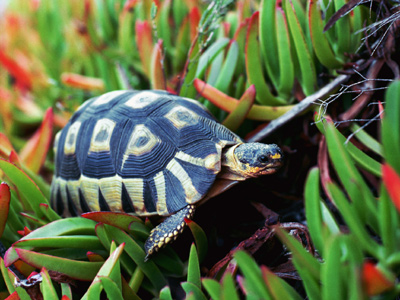

Structure Of Animal Cell Animal Cell Model Diagram Project Parts Structure Labeled Coloring and Plant Cell Organelles Cake
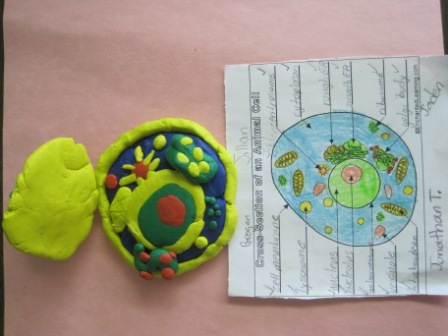
Structure Of Animal Cell Animal Cell Model Diagram Project Parts Structure Labeled Coloring and Plant Cell Organelles Cake
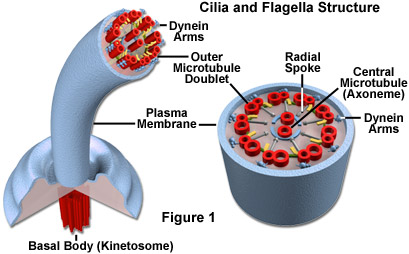

Structure Of Animal Cell Animal Cell Model Diagram Project Parts Structure Labeled Coloring and Plant Cell Organelles Cake
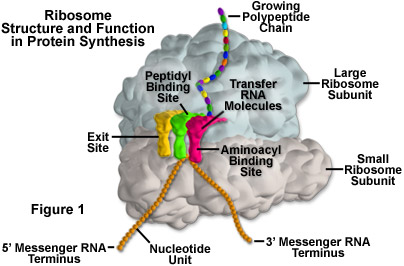

Structure Of Animal Cell Animal Cell Model Diagram Project Parts Structure Labeled Coloring and Plant Cell Organelles Cake


Structure Of Animal Cell Animal Cell Model Diagram Project Parts Structure Labeled Coloring and Plant Cell Organelles Cake

Structure Of Animal Cell Animal Cell Model Diagram Project Parts Structure Labeled Coloring and Plant Cell Organelles Cake


Structure Of Animal Cell Animal Cell Model Diagram Project Parts Structure Labeled Coloring and Plant Cell Organelles Cake


Structure Of Animal Cell Animal Cell Model Diagram Project Parts Structure Labeled Coloring and Plant Cell Organelles Cake
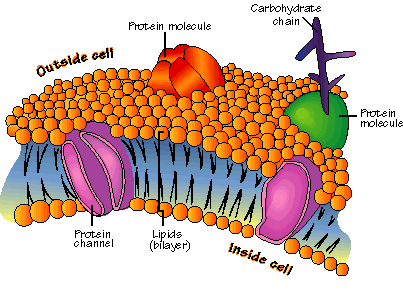

Structure Of Animal Cell Animal Cell Model Diagram Project Parts Structure Labeled Coloring and Plant Cell Organelles Cake
No comments:
Post a Comment